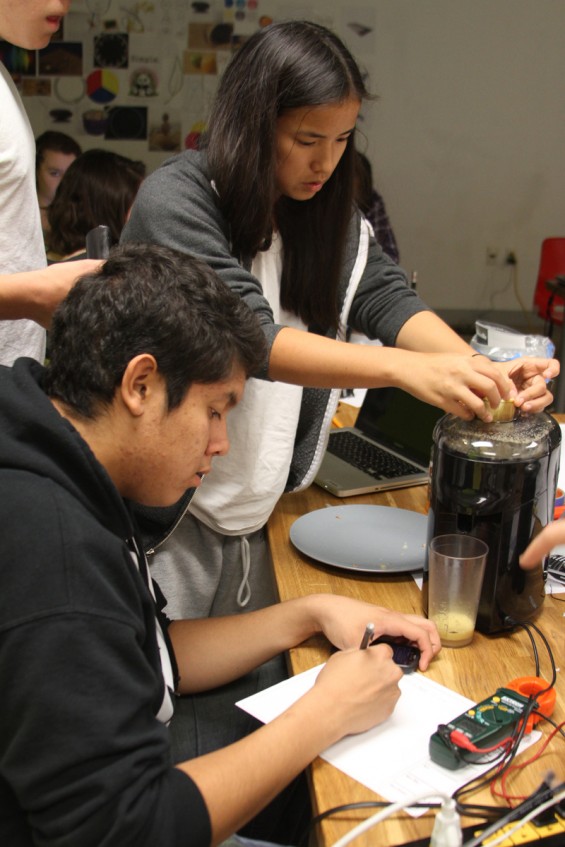
What do you want to do with your energy? And, how long do you want to do it? These were the first two questions the students were asked as they began the
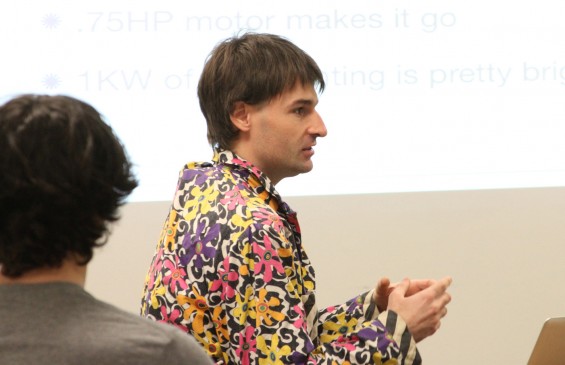
The students soon after began testing some of the toys Sean brought to the studio, such as this hand-cranked, power-generating gadget that the students used to power three LED lights.
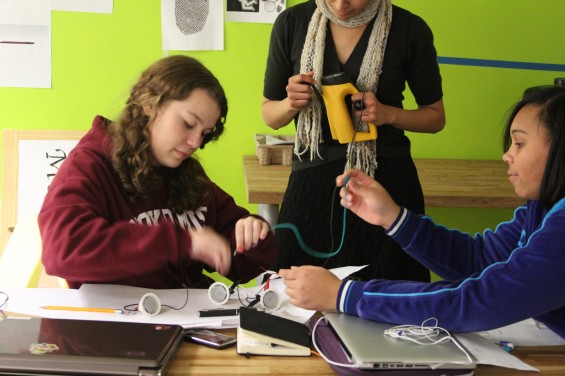
Through the early part of the week, students worked together to envision an integrated energy system design. The students decided early on that the system would use a local renewable energy profile to allow for an integrated energy system. From the initial brainstorming session, the group collectively decided that they would provide energy through pedal-power. The energy would then be used to power a juicer (to have sweet apple juice for the pedalers and other people), a stereo (to have a bona fide dance party), and a laser galactic star show (to dance under the stars!).
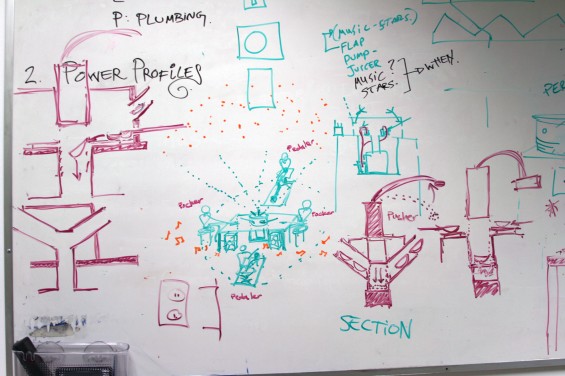
The students then split into their various teams to work on the component systems of the "Galactic Juicer." Here the Galactic Stars-Visual Team begins testing their laser-mounted motors to see what type of visuals they can produce.
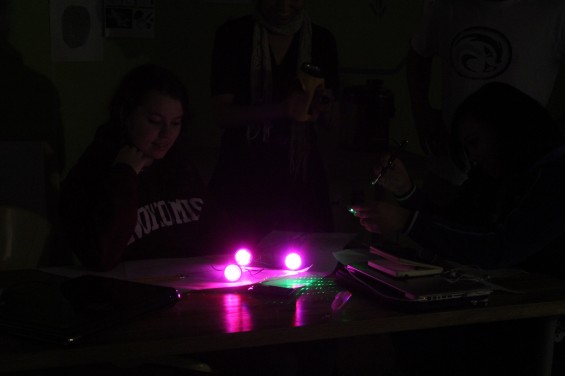
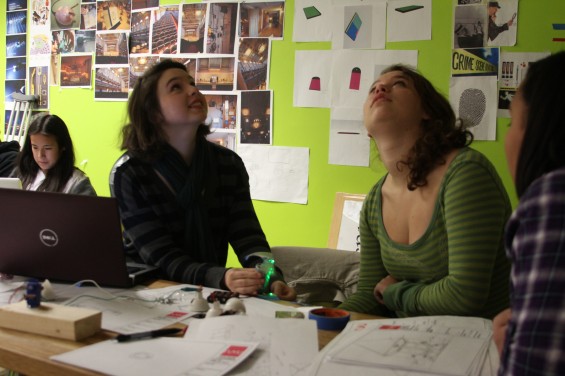
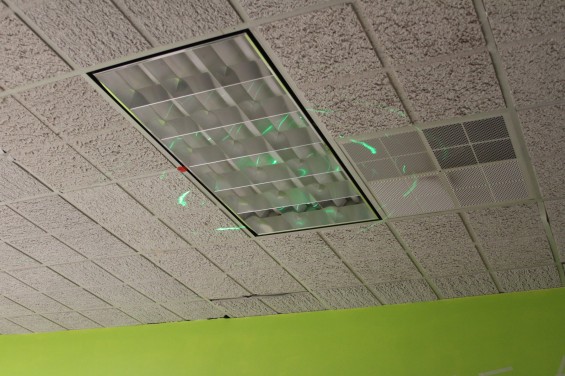
The Music Team worked diligently to wire the speakers and subwoofer.
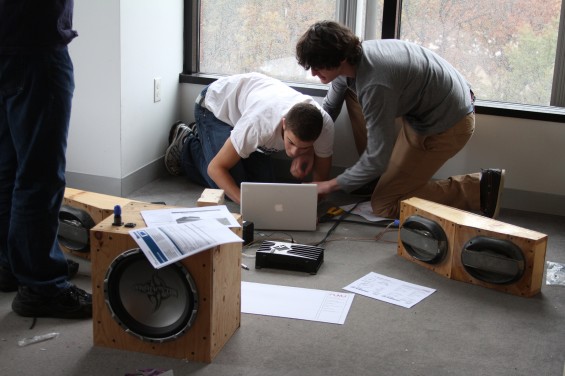
By the end of the day, the Music Team was dancing to
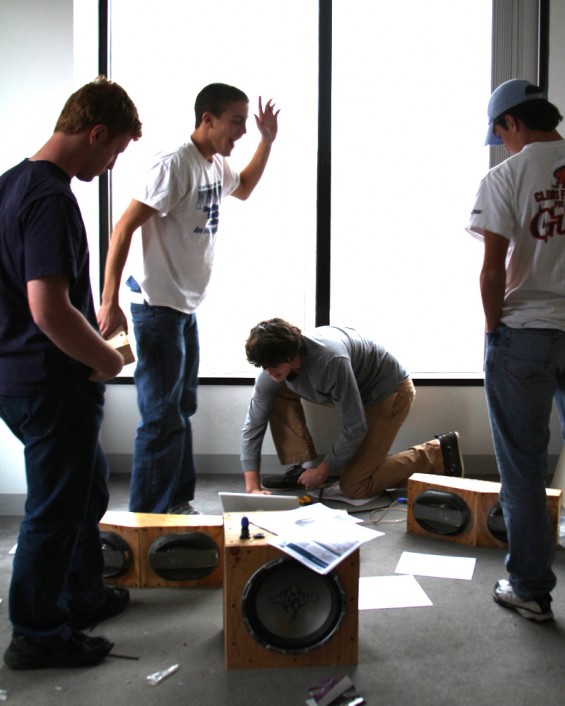
Meanwhile the Juicer Team was busy calculating the Juicer's power needs. The team measured both the current and voltage over a 6-second period to understand how much power and resultant energy over time would be required to produce a tasty glass of fresh apple juice.

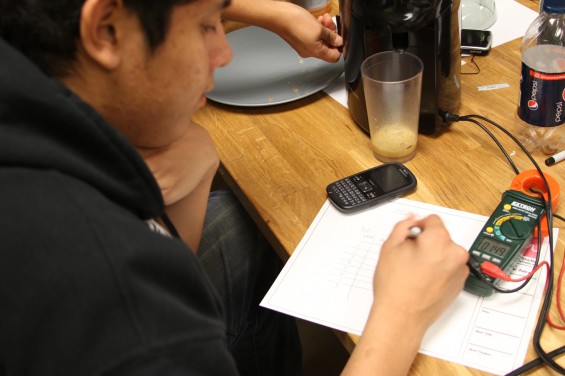
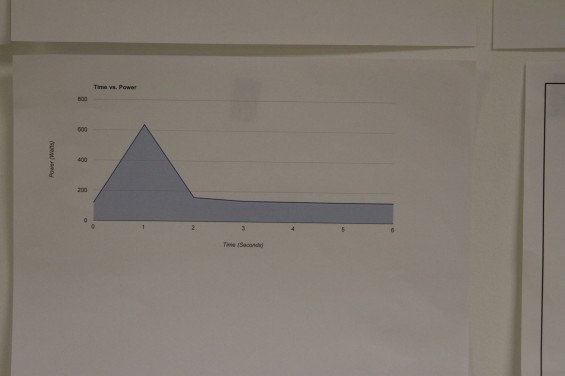
The Juicer Team also drew some section sketches to explore and show how the juicer, table and lasers would integrate together and be assembled with all the component supporting parts.
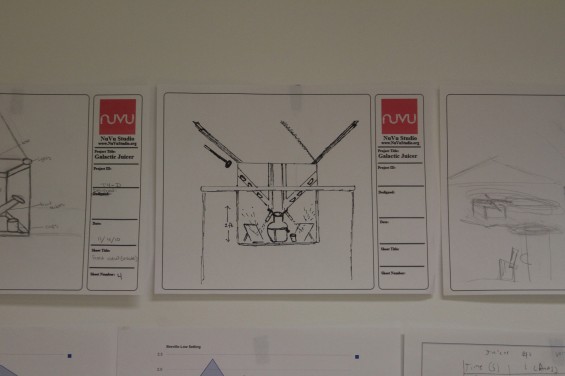
And, at the end of the day, I decided to test out the Generator Team's built seat and pedaler apparatus for generating power for the juicer, thumping bass, and galactic star show. Pedaling for Galactic Juice...what a brilliant idea!
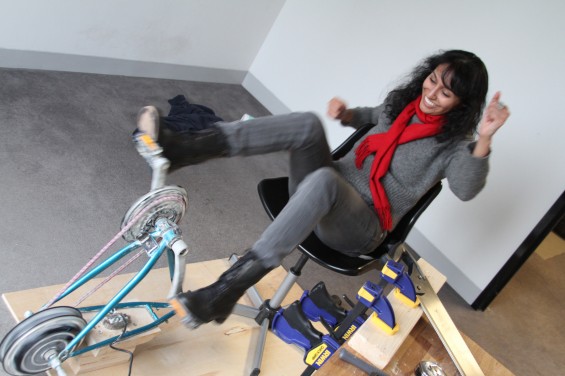
:rotate(0)/p39f1jed4mgd288myquiu5yecweg)